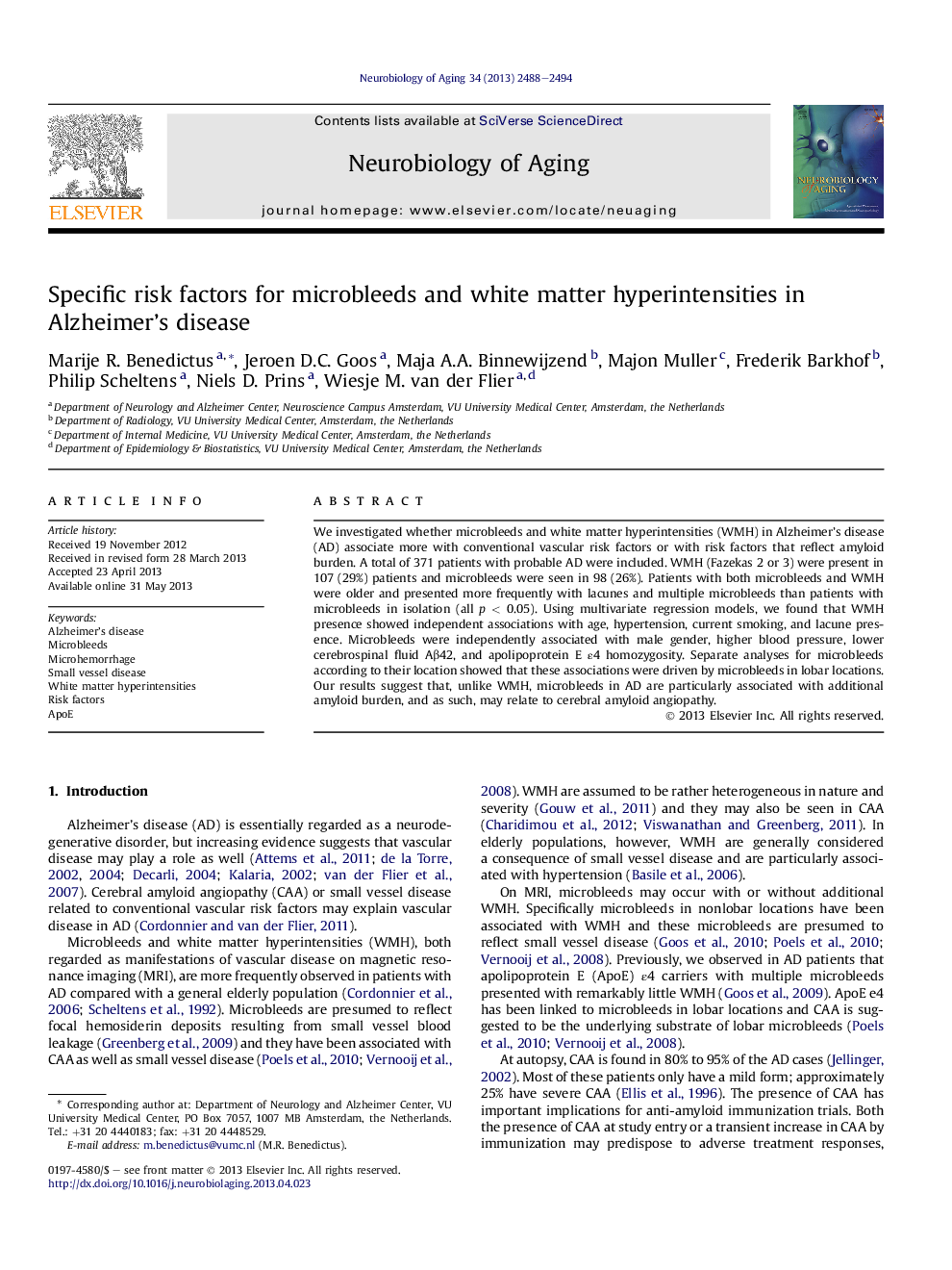| Article ID | Journal | Published Year | Pages | File Type |
|---|---|---|---|---|
| 6806838 | Neurobiology of Aging | 2013 | 7 Pages |
Abstract
We investigated whether microbleeds and white matter hyperintensities (WMH) in Alzheimer's disease (AD) associate more with conventional vascular risk factors or with risk factors that reflect amyloid burden. A total of 371 patients with probable AD were included. WMH (Fazekas 2 or 3) were present in 107 (29%) patients and microbleeds were seen in 98 (26%). Patients with both microbleeds and WMH were older and presented more frequently with lacunes and multiple microbleeds than patients with microbleeds in isolation (all p < 0.05). Using multivariate regression models, we found that WMH presence showed independent associations with age, hypertension, current smoking, and lacune presence. Microbleeds were independently associated with male gender, higher blood pressure, lower cerebrospinal fluid Aβ42, and apolipoprotein E ε4 homozygosity. Separate analyses for microbleeds according to their location showed that these associations were driven by microbleeds in lobar locations. Our results suggest that, unlike WMH, microbleeds in AD are particularly associated with additional amyloid burden, and as such, may relate to cerebral amyloid angiopathy.
Keywords
Related Topics
Life Sciences
Biochemistry, Genetics and Molecular Biology
Ageing
Authors
Marije R. Benedictus, Jeroen D.C. Goos, Maja A.A. Binnewijzend, Majon Muller, Frederik Barkhof, Philip Scheltens, Niels D. Prins, Wiesje M. van der Flier,
